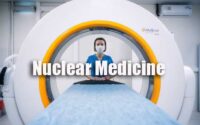Anesthesia Quiz
Anesthesia Quiz paper for the written examination is given below. Candidates who are looking for Anesthesia exam Quiz paper can find in this section. The applied candidates who are getting prepared for the Anesthesia can view this page for the Anesthesia Last Ten Years Quiz Papers.

Download the Anesthesia Quiz & Solutions & make it as a reference for your exam preparation. Take advantage of these Anesthesia Quiz Papers in a proper manner to get qualifying Marks. Last 5 years Anesthesia Quiz Papers provided here. Candidates who are applied for the above exam can check and download the Anesthesia Quiz Papers from here.
Quiz on Anesthesia
1. A 60kg man is found to have a plasma Na of 155 Meg/l. What is his water deficit ?
(1) 3.0 liter
(2) 3.5 liter
(3) 4.0 liter
(4) 4.5 liter
2. What is the treatment of choice for patients with absent renal function and hyperkalemia ?
(1) 10% calcium gluconate or calcium chloride
(2) Intravenous sodium bicarbonate
(3) Cation-exchange resin
(4) Intravenous influsion of glucose and insulin
3. Which of the following is most responsible for maintenance of cardiac output during isoflurane administration in an elderly patient with severe coronary artery disease ?
(1) Coronary artery vasodilation
(2) Increased systemic vascular resistance
(3) Increased venous capacitance
(4) Increased heart rate
4. Which complications are incorrectly paired with volatile anesthetic agents ?
(1) Carbon monoxide toxicity and Desflurane
(2) Bone marrow depression and Halothane
(3) Compound a toxicity and Sevoflurane
(4) Macrocytic anemia and nitrous oxide
5. The reason desflurane is not used for inhalation induction in clinical practice is becuase
(1) Its low blood/gas partition coefficient
(2) Its propensity to produce hypertension in high concentrations
(3) Its propensity to produce airway irritability
(4) Its propensity to produce tachyarrhythmias
6. Which of the following organs is not considered as a member of the vessel rich group ?
(1) Lungs
(2) Brain
(3) Liver
(4) Kidney
7. Which of the following inhalational agents most likely produces a decrease in systemic blood pressure by causing a junctional rhythm ?
(1) Desflurane
(2) Halothane
(3) Isoflurane
(4) Sevoflurane
8. Which of the following inhalational anesthetics is most likely to produce a coronary steal syndrome ?
(1) Halothane
(2) Isoflurane
(3) Desflurane
(4) Sevoflurane
9. Which of the following characteristics of volatile anesthetics is necessary for calculation of the time constant ?
(1) Blood/gas partition coefficient
(2) Oil/gas partition coefficient
(3) Brain/blood partition coefficient
(4) Minimum alveolar concentration
10. The concept of “context sensitive half time” emphasizes the importance of the relationship between half time and
(1) Anesthetic metabolism
(2) Blood solubility
(3) Concentration
(4) Duration
11. Which of the following antiemetics would be the best choice for treatment of nausea in the patient of Parkinson’s disease undergoing a cataract operation ?
(1) Droperidol
(2) Promethazine
(3) Ondansetron
(4) Metoclopramide
12. Which of the following statement is not true for Pheochromocytoma ?
(1) Measurement of plasma free metanephrines is sensitive test for patients at high risk of familial Pheochromocytoma
(2) Plasma free normetanephrine level higher than 200 pg/ml and/or a metanephrine level higher than 120 pg/ml confirms the diagnosis of Pheochromocytoma
(3) Pheochromocytoma is excluded if the normetanephrine level is less than 112 pg/ml and the metanephrine level is less than 61 pg/ml.
(4) Plasma catecholamine increase of at least two times the baseline values within 1-3 minutes of glucagon administration.
13. Which of the following intravenous anesthetics is converted from a water soluble to a lipid soluble drug after exposure to the bloodstream ?
(1) Propofol
(2) Midazolam
(3) Etomidate
(4) Ketamine
14. Which drug exerts its main Central Nervous System (CNS) action by inhibiting the N-methyl-D-aspartate receptors ?
(1) Ketamine
(2) Midazolam
(3) Etomidate
(4) Propofol
15. Which of the following premedications is associated with extrapyramidal side effects ?
(1) Cimetidine
(2) Scopolamine
(3) Metoclopramide
(4) Glycopyrrolate
16. Which of the following is not a volume regulation sensor ?
(1) Hypothalamic osmoreceptor
(2) Atrial stretch receptor
(3) Carotid baroreceptor
(4) Afferent renal arteriole baroreceptor
17. Dose of which intravenous anesthetic drug is recommended as per lean body weight in obese patient?
(1) Thiopental
(2) Midazolam
(3) Succinylcholine
(4) Pancuronium
18. Which of the following urinary indices does not match with pre renal azotemia?
(1) Osmolality > 500 Mmol/kg
(2) Urine/sodium < 10 Meq/L
(3) Urine /plasma creatinine ratio < 20
(4) Fractional excretion of sodium <1%
19. Which criteria does not match with RIFLE criteria for acute kidney injury?
(1) Increase serum Createnine 1.5 times with GFR decrease > 25 % and Urine output < 0.5 ml/kg/h < 6 hr.
(2) Increase serum Creatinine 2 times with GFR decrease > 50 0% and Urine output < 0.5 ml/kg/h <12 hr.
(3) Increase serum Creatinine 3 times with GFR decrease > 75% and Urine output < 0.5 mi/kg/h < 24 hr.
(4) Persistent ARF AND Complete loss of kidney function <4 week
20. Which surgical complication is LESS commonly associated with Trans urethral resection of prostate?
(1) Clot Retention
(2) Failure to Void
(3) Bladder Perforation
(4) Uncontrolled Acute Hematuria
| Practice Set | MCQs |
| Quiz | Questions and Answers |
21. Plasma concentration of following liver enzymes does not increase in patients with biliary obstruction?
(1) Serum y-glutamyl transferase
(2) 15′-nucleotidase
(3) Serum glutamic-oxaloacetic transaminase
(4) Alkaline phosphatase
22. According to the Child-Pugh scoring system, which criteria does not indicate severe hepatic dysfunction?
(1) Encephalopathy III-IV grade
(2) Serum Bilirubin >3me/dl
(3) Albumin <2.8(g/dl)
(4) International Normalized Ratio <2
23. Which statement is false for Hepatopulmonary syndrome?
(1) Persistence of liver disease usually with portal hypertension and cirrhosis
(2) Alveolar to arterial O2 gradient <15 mm Hg
(3) Micro aggregated albumin lung perfusion scan
(4) Delayed contrast enhanced echocardiography
24. HELLP syndrome include each of the following EXCEPT
(1) Hemolysis
(2) Liver enzymes increased
(3) Low Platelet count
(4) Pulmonary hypertension
25. Which of the following option is not the correct criteria for weaning from mechanical ventilation?
(1) Rapid shallow breathing index > 100
(2) Vital capacity >10 mi/kg
(3) Inspiratory pressure < —25 cm water
(4) Tidal volume > 5 ml/kg
26. Which of the following indices is not the criteria for requirement of mechanical ventilation?
(1) Maximum inspiratory force > 25 cm H2O
(2) PaO2/FiO2 ratio < 300 mm Hg
(3) PA-aO2 gradient < 350 mm Hg
(4) VD/VT > 0.6
27. Which of the drugs below would have the least impact on somatosensory evoked potentials monitoring in a 15-year-old patient undergoing scoliosis surgery?
(1) Midazolam
(2) Fentanyl
(3) Thiopental
(4) Vecuronium
28. Which of the following is most likely associated with a falsely lower SaO2 as measured by pulse oximetry ?
(1) Hemoglobin F
(2) Carboxyhemoglobin
(3) Bilirubin
(4) Methylene blue dye
29. Select the false statement regarding noninvasive arterial blood pressure monitoring.
(1) If the width of the blood pressure cuff is too narrow, produce an over estimation of systolic pressure.
(2) If the width of the blood pressure cuff is wider, produce a under po estimation of systolic pressure.
(3) If the blood pressure cuff is wrapped around the arm too loosely, the measured blood pressure will be falsely lowered.
(4) The width of the blood pressure cuff should be 40% of the circumference of the patient’s arm.
30. Which of the following pharmacologic agents would have the least effect on transcranial motor evoked potentials?
(1) Isoflurane
(2) Nitrous oxide
(3) Etomidate
(4) Fentanyl
31. Which option is incorrect about postoperative shivering?
(1) Shivering can increase metabolic rate and O2 consumption.
(2) Best treated by a combination of supplemental oxygen
(3) Usually not occurs in patients with decreased body temperature
(4) Rewarming the patient and/or administering IV meperidine
32. A 72-year-old patient undergoing resection of an astrocytoma in the sitting position suddenly develops hypotension. Air is heard on the precordial doppler ultrasound. Which therapeutic maneuver to treat venous air embolism is inappropriate?
(1) Discontinue N2O
(2) Apply jugular venous pressure
(3) Implement positive end-expiratory pressure (PEEP)
(4) Flood the surgical wound with saline
33. Which statement is incorrect about rating of central venous access?
(1) Internal jugular central venous access – Best success rate
(2) Basilic central venous access Worst in technique related complication
(3) Femoral central venous access Worst in long term use
(4) Subclavian central venous access Worst in ease of cannulation
34. What percentage does cerebral blood flow change for each rnm Hg change in PaCO2?
(1) 1%
(2) 2%
(3) 7%
(4) 10%
35. What is the normal cerebral metabolic rate for oxygen per minute?
(1) 0.5 mL/100 g brain tissue
(2) 2.0 mL/100 g brain tissue
(3) 3.5 mL/100 g brain tissue
(4) 7.5 mL/100 g brain tissue
36. Which clinical criteria is inconsistent with a diagnosis of brain death?
(1) Persistent apnea for 10 minutes
(2) Absence of pupillary light reflex
(3) Absence of oropharyngeal reflex
(4) Decorticate posturing
37. How long after a cerebrovascular attack, elective surgery can be carried out to minimize the risk of occlusive vascular accident?
(1) 6 weeks
(2) 6 months
(3) 9 months
(4) 1 year
38. In patients with increased ICP, hyperventilation is typically limited to a PaCO2 in the range of 30 to 35 mm Hg because additional hyperventilation-
(1) Is virtually impossible
(2) Causes brain ischemia due to a rightward shifting of the oxyhemoglobin dissociation curve
(3) May be associated with a worsening of neurologic outcome
(4) Could result in paradoxical cerebral vasodilation
39. Which of the following fluid & electrolyte disorder is not associated with cerebral salt wasting intra cranial pathology?
(1) Low serum sodium concentration
(2) Low plasma volume
(3) Low urine sodium concentration
(4) Normal or high serum osmolarity
40. Diagnosis of Guillain-Barre syndrome is not supported by-
(1) Progressive bilateral weakness in arms and legs areflexia
(2) Persistent asymmetry of the symptom
(3) Progression of symptoms over 2-4 weeks
(4) Increased concentration of protein in CSF with a cell count
41. Which of the following criteria does not fulfil the diagnosis of preeclampsia?
(1) Blood pressure > 139/89 mm Hg after 20 weeks’ gestation in a woman with previously normal blood pressure
(2) Proteinuria (<300 mg in a 24hour urine specimen)
(3) Thrombocytopenia (platelet count < 100,000/pL)
(4) Renal insufficiency (serum creatinine > 1.1 mg/dL)
42. Which drugs are useful in the treatment of uterine atony in an asthmatic patient with preeclampsia?
(1) Oxytocin only
(2) Oxytocin and 15-methyl PGF2a
(3) Oxytocin and methyl ergotamine
(4) 15-methyl PGF 2a only
43. Which condition best describes the maternal condition with the first painless vaginal bleeding during the second or third trimester?
(1) Uterine rupture
(2) Placenta abruption
(3) Ectopic pregnancy
(4) Placenta previa
44. Which of the following pressure of capacities changes most during pregnancy?
(1) Systolic blood pressure
(2) Diastolic blood pressure
(3) Central venous pressure
(4) Vital capacity
45. After how many weeks of gestation does the aortocaval compression start to become significant?
(1) 5 weeks
(2) 10 weeks
(3) 15 weeks
(4) 20 weeks
46. Which agent is most useful for raising the gastric pH just before induction of general anesthesia for emergency cesarean section?
(1) Metoclopramide
(2) Ranitidine
(3) Sodium citrate
(4) Magnesium hydroxide and aluminum hydroxide
47. What is the serum concentration of magnesium associated with loss of the deep tendon reflexes?
(1) 2.0-3.5 mEq/L
(2) 10-13 mEq/L
(3) 7-10 mEq/L
(4) 13-15 mEq/L
48. According to the Gross classification, what is the most common congenital anomalies of trachea and esophagus?
(1) Esophageal atresia without fistula
(2) Esophageal atresia with proximal fistula.
(3) Esophageal atresia with distal fistula.
(4) Esophageal atresia with proximal and distal fistulas.
49. Compared with the adult dose, the dose of succinylcholine administered to neonate patient should be
(1) Diminished because of the immature nervous system
(2) Increased because of greater volume of distribution
(3) Increased because of increased acetylcholine receptors
(4) Decreased because of decreased acetylcholine receptors
50. The most common cause of neonatal bradycardia is
(1) Congenital heart disease
(2) Maternal drug intoxication (narcotics, alcohol, magnesium, barbiturates, digitoxin)
(3) Hypoxemia
(4) Postpartum cold stress
51. A 20-kg, 6-year-old girl develops pulseless ventricular tachycardia. As per 2005 American Heart Association Guidelines for Cardiopulmonary Resuscitation what should be the energy level for the initial shock ?
(1) 20 Joules (J)
(2) 40 Joules (J)
(3) 60 Joules (J)
(4) 80 Joules (J)
52. Which of the following is the least appropriate technique for the induction of general anesthesia in a newborn for surgical repair of tracheoesophageal fistula?
(1) Awake tracheal intubation
(2) Inhalation induction with spontaneous ventilation and tracheal intubation
(3) Inhalation induction using positive-pressure bag and mask ventilation and tracheal intubation
(4) Rapid IV induction and tracheal intubations
53. A 50-kg, 12-year-old child sustains a thermal injury to his legs, buttocks, and back. The estimated area involved is 50%. How much fluid should be administered during the first 24 hours?
(1) 4.0L
(2) 5.5L
(3) 8.0L
(4) 10.0L
54. Complete the following statement Retinopathy of prematurity
(1) Occurs only after exposure to high concentrations of O2 for 12 or more hours
(2) Is most commonly seen in newborns younger than 44 weeks post conceptual age
(3) Cannot occur in atients who have never received supplemental O2
(4) Is caused by obliteration of immature retinal arteries
55. Which of the following complications would be LEAST likely with deep cervical plexus nerve block ?
(1) Vertebral artery injection
(2) Blockade of the spinal accessory nerve
(3) Epidural injection
(4) Blockade of phrenic nerve
56. Congenital syndromes frequently associated with the cardiac abnormalities does not include –
(1) Tracheoesophageal fistula
(2) Meningomyelocele
(3) Gastroschisis
(4) Congenital diaphragmatic hernia
57. A 3-kg term neonate is scheduled for intra-abdominal surgery. The preoperative haematocrit is 50%. What is the maximum allowable blood loss to maintain the haematocrit at 40%?
(1) 56ml
(2) 36ml
(3) 66ml
(4) 46 ml
58. Which of the following is not a component of the post-anaesthetic discharge scoring system?
(1) Drinking and eating
(2) Surgical bleeding
(3) Nausea and vomiting
(4) Pain
59. What is not the guideline for safe discharge after ambulatory surgery?
(1) Stable vital sign for 1 hr
(2) Able to walk with assistance
(3) Orient to person, place and time
(4) Minimal nausea & vomiting
60. Which one is not the original criteria for post anaesthesia Aldrete Morgan Recovery Score?
(1) SpO2 < 90% on oxygen and breathes deeply and cough freely
(2) Blood pressure within 20% of normal
(3) Fully awake & move all extremities
(4) Post-operative pain, nausea and vomiting



